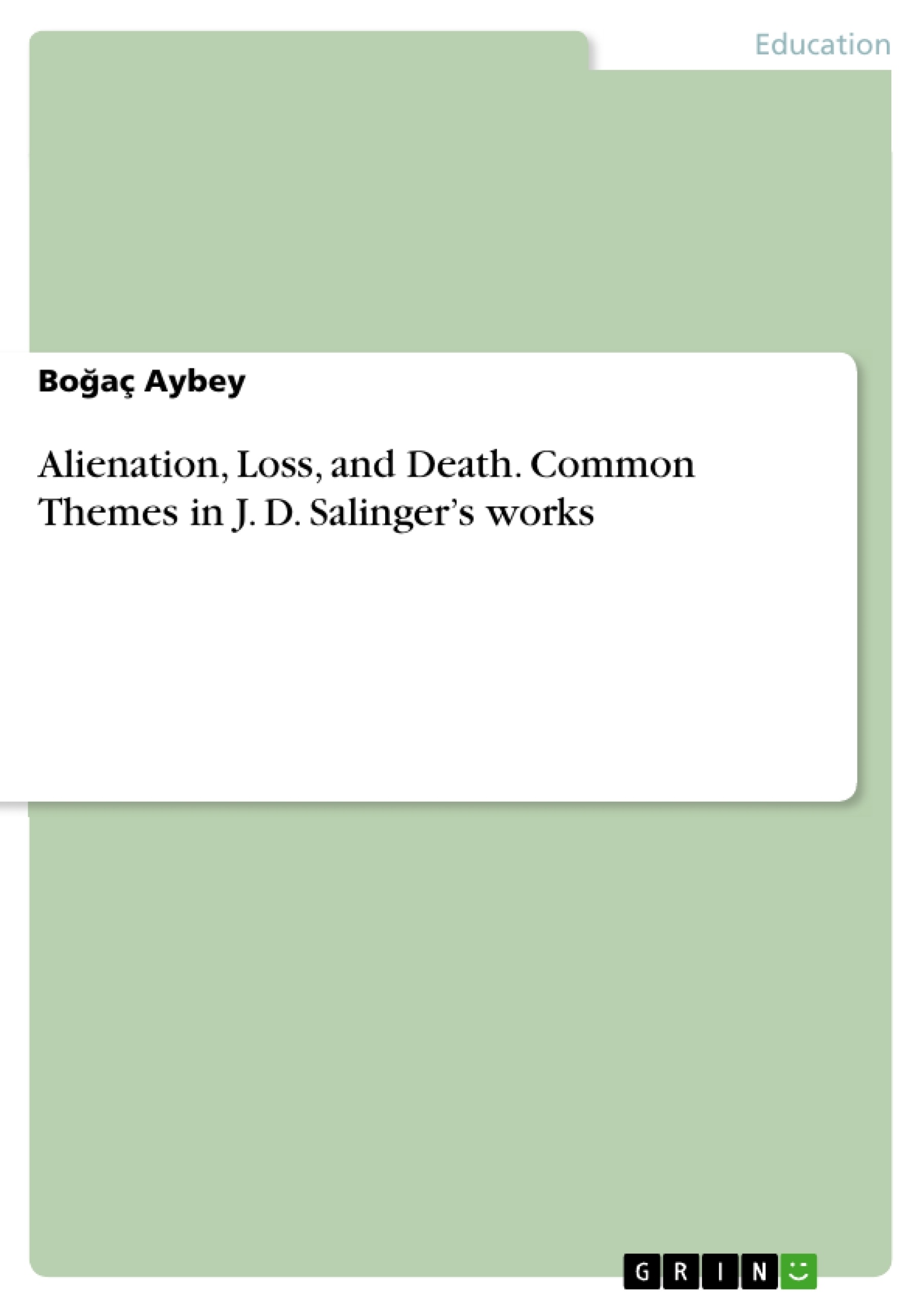Like every writer, J. D. Salinger also tries to convey messages to his readers through his works. It is argued here that common themes in Salinger’s works are alienation, loss of innocence, and death.
This research paper discusses these common themes in his works by comparing his works. It concludes that these themes and the drawing of mostly young characters may be what makes Salinger's works so important and meaningful for young people to this day.
Table of Contents
- Common Themes in Salinger's works
- Alienation
- Some of Salinger's characters feel isolated because of lack of love
- Salinger's some other characters are alienated because they are not connected with others
- According to the characters, they do not satisfy with the parental love and this need of parental love lays the groundwork for alienation
- Loss of innocence
- His characters do not want to lose their innocence in a corrupt and phony world
- Salinger's characters become sensitive and nostalgic when they see anything that represents childhood where innocence lies
- Concept of death
- He displays the grief and behavior of others after death.
- Salinger often uses death scenes to accentuate different point of views towards death.
Objectives and Key Themes
This essay examines the common themes found in the works of J. D. Salinger, exploring how he utilizes his characters to convey messages about the human condition. The essay argues that Salinger's works are characterized by a profound exploration of alienation, loss of innocence, and death.
- Alienation: Salinger's characters often struggle with feelings of isolation and disconnect from the world around them. This alienation stems from a variety of factors, including a lack of love, difficulty connecting with others, and dissatisfaction with parental relationships.
- Loss of Innocence: Salinger's characters grapple with the inevitable transition from childhood to adulthood, fearing the loss of innocence and the corrupting influences of the adult world.
- Concept of Death: Death plays a significant role in Salinger's works, serving as a catalyst for exploring themes of grief, loss, and the complex nature of human relationships.
- The Phoniness of the Adult World: Many of Salinger's characters express a deep disdain for the hypocrisy and superficiality they perceive in adult society, often labeling adults as "phonies."
- The Value of Childhood: Salinger's characters often find solace and connection in childhood experiences and relationships, highlighting the importance of innocence and genuine connection.
Chapter Summaries
The essay begins by establishing the common themes of alienation, loss of innocence, and death in Salinger's works. It then delves into each theme, examining how Salinger explores these concepts through his characters and their experiences. The essay analyzes characters such as Seymour Glass, Holden Caulfield, and Franny Glass, highlighting their struggles with love, connection, and the challenges of navigating the complexities of the adult world. The essay also explores how Salinger utilizes death as a recurring motif, examining the impact of loss and grief on his characters.
Keywords
The primary focus of this essay is on the exploration of alienation, loss of innocence, and death in the works of J. D. Salinger. The essay examines how Salinger's characters grapple with these themes through their experiences with love, connection, and the perceived phoniness of the adult world. The essay further explores the importance of childhood experiences and relationships in Salinger's works, highlighting the value of innocence and genuine connection.
- Quote paper
- Boğaç Aybey (Author), 2012, Alienation, Loss, and Death. Common Themes in J. D. Salinger’s works, Munich, GRIN Verlag, https://www.grin.com/document/342144




